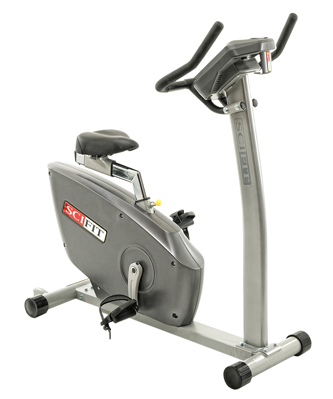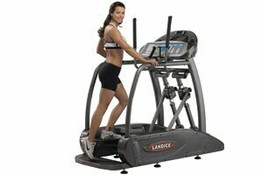|
Cardiorespiratory exercise equipment to improve cardiorespiratory fitness, reduce the risk of disease, and as important tools in rehabilitation of a myriad injuries and post-surgical procedures. Because there are several different types of training regimens to challenge the cardiorespiratory system, there are a variety of machines to accommodate individual training preferences and while providing unique ways to provide the cardio stimulus. They include:
|
 |
5% off Your Entire Purchase of $300 or More - Use Code TAKE5 During Checkout 

Categories
- Activities of Daily Living
- Ambulation Training Equipment
- Aquatic Therapy
- Balance Training Equipment
- Bathroom Assists
- Beds, Mattresses & Accessories
- Cardiorespiratory Exercise Equipment
- Chiropractic Equipment
- Diabetic Care
- Exercise Equipment
- Fitness Agility
- Flexibility & Stretching Equipment
- Flexibility and ROM Testing Devices
- Gait Assists
- Hand Therapy
- Home Care
- Hot and Cold Therapy
- Human Anatomical Charts
-
Human Anatomy Models
- Human Arm Models
- Human Bones Models
- Human Brain Models
- Human Ear Models
- Human Eye Models
- Human Foot Models
- Human Full Body Skeleton Models
- Human Hand Models
- Human Heart Models
- Human Joints Models
- Human Larynx Models
- Human Leg Models
- Human Muscle Models
- Human Pelvis Models
- Human Skull Models
- Human Spine Models
- JTech Medical Products
- Massage
- Medical Clinic Supplies
- Medical Equipment & Supplies
-
Medical Diagnostics
- Aesthesiometers
- Biofeedback
- Percussion/ Reflex Hammers
- Physical Therapy Student Kit
- Anthropometric Tools
- Body Fat Measurement
- Cognitive Testing
- Electronic BP and Pulse Monitors
- Evaluation Sets
- Fingertip Pulse Oximeters
- Medical Thermometers
- Monofilament Tests
- Ophthalmoscopes & Otoscopes
- Sensory Evaluation
- Sphygmomanometers /Blood Pressure Gauges
- Spirometers
- Stethoscope
- Time & Distance
- Weight Scales
- Medical Scooters
- Medical Simulators
- Muscle Strength Testing Devices
- Occupational Therapy Equipment
- Pediatric Therapy
- Phlebotomy Equipment
- Physical Therapy Products
- PPE
- Resistance Training Devices
- Resistance Training Exercise Equipment
- Resistance Training Weights
- Respiratory/Oxygen Aids
- Skillbuilders Therapy Products
- Splints, Braces, Wraps, Supports & Scissors
-
Therapeutic Modalities
- Acupuncture Needles
- AED
- Combo Ultrasound and E-Stim Therapy
- Compression Therapy
- Continuous Passive Motion (CPM) Devices
- Dry Needling
- Electrotherapy Accessories
- Electrotherapy Devices
- IASTM
- Iontophoresis
- Light and Laser Therapy Machines
- Neuromuscular Electrical Stimulation (NMES / EMS)
- Shockwave Therapy
- Shortwave Diathermy
- TENS Units
- Ultrasound Therapy Machines
- Sports Medicine Equipment
- Treatment Furniture
- Transportation Equipment - Emergency
- Treatment Tables
- Wheelchairs
- Whirlpool Therapy Tubs
- Work Hardening Products
- Parts and Accessories
Quick Links
- Starting a Clinic
- Contact us
- About Us
- Resources
- Blog
- Request a Quote











